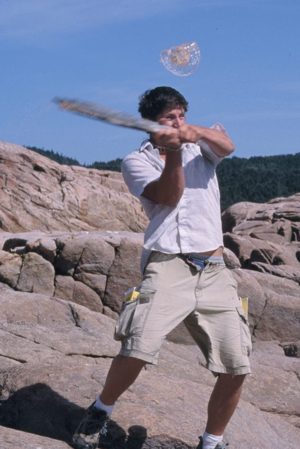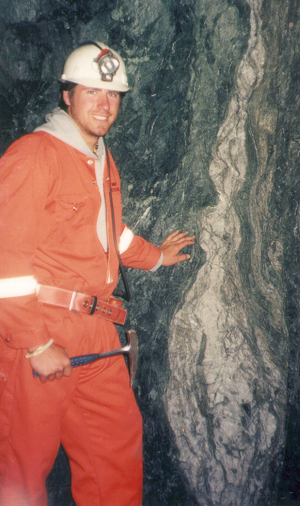Jonathan Crealock


B.Sc. (Honours) Thesis
(PDF - 15.5 Mb)
The Petermann Glacier of Northern Greenland has been associated with producing large, flat, low profile and tabular icebergs in the north Atlantic. The glacier is speculated to have produced a rock loaded, neutrally buoyant iceberg, which was encountered by the CCGS Louis S. St Laurent in the Kane Basin between Ellesmere Island and Greenland on August 17, 2001 during the Canadian German Nares Strait Geo Cruise.
Rock eval analysis of bituminous ice rafted debris (IRD) revealed Kerogen types II III with a peak thermal maturity (T max) range between 385 450 C and a max total organic carbon content (TOC) of 1.28 mg HC/g rock. Thermal maturation combined with petrographic and rock descriptions of the IRD are compatible with mature and postmature occurrences expected along North Greenland. Silurian aged marginal marine to open shelf dolostone, bioclastic debris and skeletal wackestones prevail across southern Hall Land and Washington Land near the Petermann Glacier, NW Greenland and are suspected as the source area for the debris.
The massive floating ice tongue of the Petermann Glacier is flanked by valley walls exceeding 500 m providing increased chance for supraglacial rock accumulation.
Because of their tabular shape, high stability and low profile on the water, these neutral buoyancy icebergs pose a serious threat to navigation in northern waters. This research has revealed recent sightings of similar rock loaded icebergs of a similar source as far south as the offshore petroleum producing areas of Atlantic Canada, emphasizing that they pose a more significant threat than initially assumed.
It is speculated that warm summer temperatures and a record breaking amount of precipitation, leading to unprecedented flooding and closure of the Thule airport in July 2001, may have facilitated mass wasting and possibly glacial surging which resulted in the production of the debris loaded iceberg encountered in August 2001.
Keywords:
Pages: 72
Supervisor:
Marcos Zentilli



